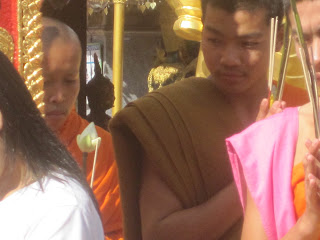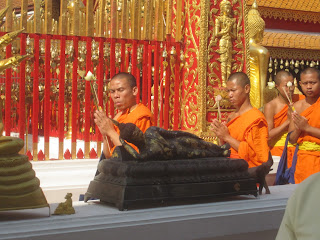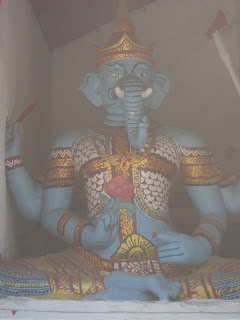Author Archives: jkachuba
Thailand is a haunted country.
Despite the fact that 95% of the population is Buddhist, Thai Buddhism comes laced with a healthy dose of animism, a belief in spirits in everything. Centuries before Buddhism found its way into Thailand, the Thai people recognized spirits in the air, the water, the ground, trees and plants, animals–spirits everywhere and in everything.
Today, all buildings in Thailand, whether they be private homes, businesses, public buildings, hotels, hospitals, schools, etc. have spirit houses standing before them, new homes for the spirits of the land that were displaced when the structures were built. No self-respecting Thai would be caught in public without an amulet or charm of some sort to help protect him from malicious spirits or to bring him luck and good fortune. Sacred trees are often girded with seven-color cloth, a sign of respect for the spirits living inside them.
In such a country, then, it comes as no surprise that ghosts are everywhere, even on the campus of Silpakorn University in Nakhon Pathom. “There are souls in the water,” a professor of biology told me. “You can see them late at night, just below the water. I see them all the time,” she said.
She went on to tell me that she sees “souls,” as she called ghosts, in many places. “They are trying to tell me something, or they want me to do something, but I don’t know what.”
“Do you know about the ghost house?” an engineering professor asked me. I told him I did not and he pointed out the old-style wooden Thai houses on stilts at the far end of the campus. “No one lives in them anymore,” he said.
“Why are they haunted?” I asked.
“I don’t know,” he said, “but people see the ghost of a woman there, wearing traditional Thai clothing.”
“Do you believe in ghosts?” I said.
The professor was shy in answering, but his guarded reply indicated that, yes, he thought ghosts were a possibility.
The Thai will tell you that ghosts will steal your soul and they do not like to be out late at night, especially alone. Even on hot nights, some Thai will make sure their windows are closed in order to keep ghosts at bay.
I have yet to walk near the lake late at night or to visit the ghost house, but rest asured I will before I leave the university. Perhaps, I’ll have a ghost story of my own to tell.






